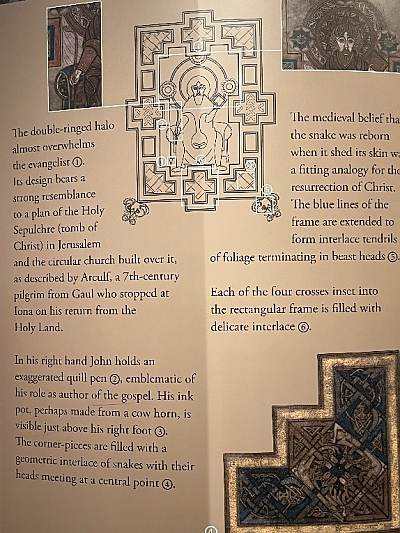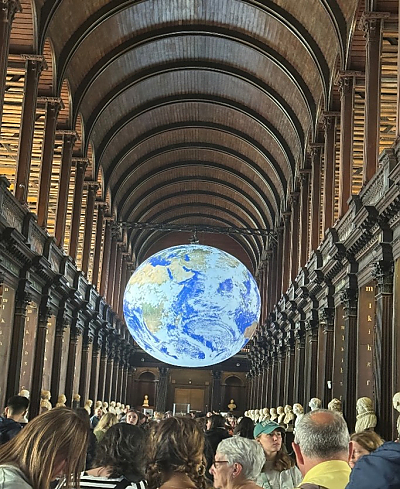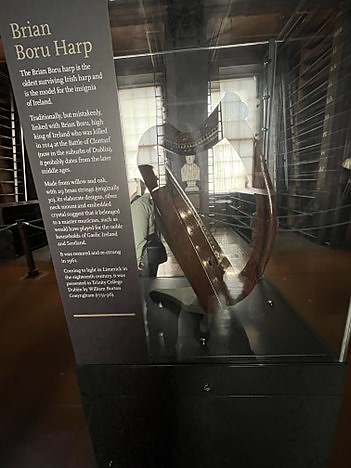The Book of Kells and Trinity College Library
June 18 Trinity Library and the Book of Kells--Ellie, Felix and Ryan
The Book of Kells
Our first destination this Tuesday was the Book of Kells and The Old Library at Trinity College. While at the museum exhibit, our group had the opportunity to see and read about the history of the Book of Kells. It is impressive that after centuries, its original pigments have never faded, but now it sits within a glass container in a temperature-controlled environment in the dark. In the room just before the book, photographic images and diagrams explain what materials were used to create the book and the meanings behind the symbols and Latin script.

There is a secondary exhibit about the book that is an eight-minute long 360-degree view journey of the Book of Kells throughout the centuries. It mentioned it used to be decorated on the exterior with jewels and gold until it was lost. Yet the original pages were saved. The book was moved from the northern British Island to Ireland where it would be lost, found, then gifted to Trinity College where it resides today.
The Old Library
After viewing the Book of Kells, we were allowed to view The Old Library from the floor above. Most of the library was empty of books, as they were being restored and cleaned for long-term preservation. Inside the library, there was also a Gaia sculpture. This piece of artwork is a 3-D image projected from images taken from NASA's spacecraft and satellites of the planet. The actual sculpture is rotating to mimic the rotation of the earth.

Brian Boru’s Harp by Felix
In the long room at Trinity College Dublin, the museum exhibit that stood out and inspired me the most was the Brian Boru harp as it reminds me of my passion for music. Since I am a guitar player myself and have been playing for the last seven years, I learned that the guitar and the harp are cousins of the string instrument family. They both blend in well with other musical instruments as they are played. If a musician played any of those instruments, the music would sound similar due to the ways in which the strings would be plucked. The only difference, however, is the number of strings on each of them. The guitar particularly has six strings altogether where I can make a chord by using my left fingers and then can strum with a pick using my right hand to play it. Chords are sounds made on an instrument. On the other hand, I discovered that the harp only has one string that cannot be controlled because the bending techniques only take place on certain strings.










